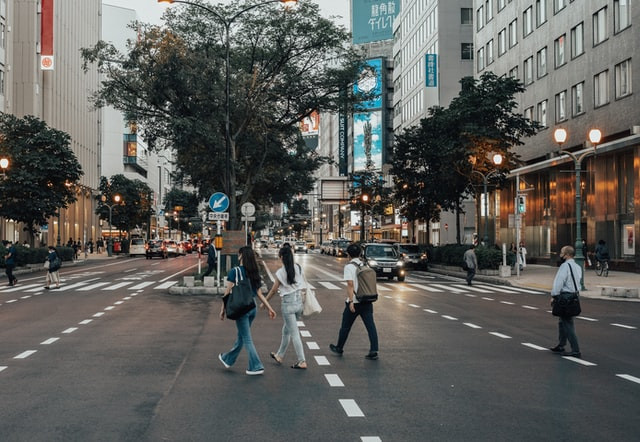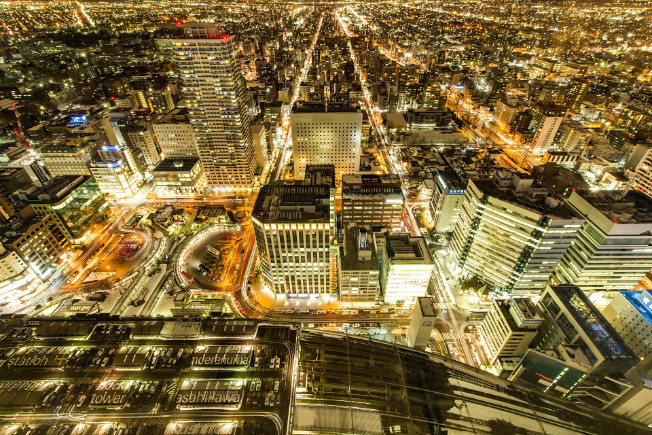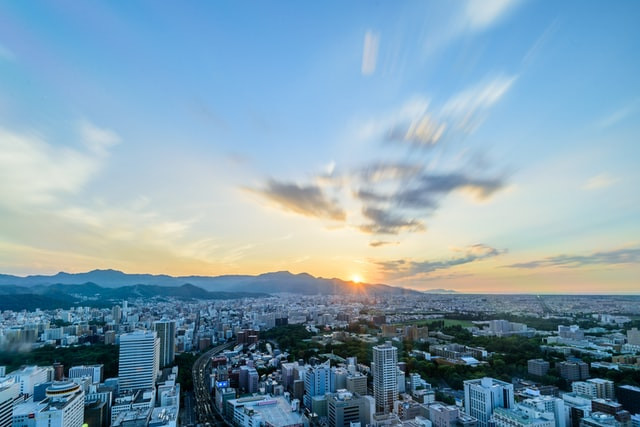Hokkaido is one of the must-go places when one visits Japan. Blessed with nature’s beauty, the capital of Hokkaido, Sapporo has a great influx of tourists, and many choose to stay. If you are still deciding on the place to settle in Japan, here is the final push.
Table of Contents
- Sapporo, the capital city of Hokkaido
- Living a Comfortable Life in Sapporo
- Sapporo and its many attractions
- What to do next
Sapporo, the capital city of Hokkaido
Hokkaido is the northernmost island of Japan, forming what appears to be the charging head of a seahorse facing and leaping toward the Pacific Ocean and with the rest of the islands forming the body and tail. Because of its location, Hokkaido generally has a homogenous sub-arctic climate that has made it become a favorite destination of local and foreign tourists for its many wonderful sites and activities. And it is in Sapporo, the capital city of Hokkaido and the 4th largest city of Japan (5th if you count the 23 Wards of Tokyo), where the 1972 Winter Olympics were held and also where the annual Snow Festival is held.
※ Japan’s Statistics 2020, "Population Separate by City"

In Sapporo, one can enjoy the passage of the four seasons with various engaging events and celebrations that the Japanese have come to incorporate into their lives - various annual rituals celebrating nature as well as their national identity.
Unlike in the southern parts of the country where summers can become so hot and humid, the summers in Sapporo are not so hot (maximum of 30 degrees Celsius) and are also dry and bearable. During autumn, people can have the time of their life enjoying the clean beaches and touring the island to see the majestic mountains, lakes and the vast countryside during the gradual changing of the colors of the leaves and moods of nature before the snow begins to cover the landscapes with fluffy snow perfect for winter sports. The coldest it gets there is about -7 degrees Celsius, unlike other places in Canada and Europe where it can go down to 40 below.
Although Sapporo now has almost 2 million residents within its boundaries, it used to be a far-flung trading post of the indigenous Ainu ethnic Japanese during the Edo Period (from the 16th to the 19th century) after which it was renamed Hokkaido and managed by the city’s founding father, Yoshitake Shima, who established the present city’s location.
※ Welcome to Sapporo, "Brief Introduction to Sapporo"
Writer's Pick
Living a Comfortable Life in Sapporo

There several things to consider for those who may be considering Sapporo as a place of retirement or, even before that, to work and live in. This is especially applicable to those individuals who prefer the less stressful life in contrast to the fast-paced city-living common in the big cities, such as Tokyo and Osaka, but still like city life.
For although Hokkaido Island covers 20% of the total land area of Japan, its population accounts only for 5% of the total Japanese population.
※ Hokkaido Government, "Hokkaido's Business Environment"
Sapporo is a city that is most similar to European cities because of the many business offices built in the 1980s to house foreign companies; still, the entire population remains small. Compared to the crowded areas in the other islands, Sapporo and the whole of Hokkaido can be considered a vast wilderness.
Cost of living in Sapporo is not as high compared to other cities, such as Tokyo and Osaka. The city has a very efficient transportation system that strictly observes regular schedules such that owning and operating a car is almost unnecessary. And since Sapporo has a grid-like city layout, one will not have much difficulty in finding one’s way around for newcomers. Foreigners who wish to rent a car, however, can use their international license for one year from their arrival in Japan before they can apply for a permanent Japanese license.
A common measurement of rent spaces in Japan is typically scaled in tatami mats, with an average tatami spanning by 1.8 meters by 0.9 meters. Below are some of the expected prices,
-
6 to 11.9 Tatami mats, average of around 40,000 yen per month
-
12 to 17.9 Tatami mats, average of around 46,700 yen per month
-
18 to 23.9 Tatami mats, average of around 55,000 yen per month
Aside from insurance fees, agency fees, advance and deposit rentals and the cost for transporting your personal effects, which could raise the total amount by another 200,000 Yen. As far as food is concerned, the cost is almost comparable anywhere you go; however, Sapporo offers some of the most delicious food you can find in Japan. Besides, street foods abound in the often-frequented shopping areas, such as the Susukino.
※ Official Statistics of Japan, "2018Housing and Land Survey / Basic Tabulation on Dwellings and Households Japan, Prefecture, Shi, Ku, Machi and Mura"
Sapporo and its many attractions

Sapporo, contains vast forested areas in the city which can offer relaxing as well as invigorating time for visitors and residents who wish to unwind with friends and family. Its annual Snow Festival in February can accommodate as many as 2 million tourists who want to experience a rare and truly memorable celebration of Japan’s natural and cultural traits. But right in Sapporo itself, one can visit many interesting and exciting places without having to hop into a fast train or an airplane. Here are a few:
Parks
-
Odori Park is Sapporo’s main city park, where festivals are conducted all year round, including the spring lilac festival and the winter snow festival.
-
Maruyama Park and Zoo houses almost a thousand live animals, as well as the wildlife of Hokkaido, where you can watch them from a safe distance, for instance, polar bears.
-
Walk at the beautiful Asiyama flower garden park. Best to visit during autumn to enjoy the fall colors.
Food and Shopping
-
Ramen Alley (Ganso Ramen Yokocho) provides authentic Japanese ramen, unlike the ones you buy in fast food chains in many cities of the world. It offers Sapporo’s original miso ramen, available at affordable prices.
-
Tanukikoji shopping street where you can shop in a covered arcade whose history dates back to the 1890’s. It has old and new shops, restaurants and karaoke bars for people from all walks of life.
Others
-
Susukino offers night-life entertainment similar to that available in Tokyo.
-
Sapporo Beer Museum takes you to Sapporo’s own beer history back to 1876 when it was founded, along with a real taste of various tasty Sapporo beers.
-
There are annual events in Sapporo to look forward to, like the Sapporo Snow Festival and Sapporo Lilac Festival.
What to do next

Whether one merely plans to visit or work, marry and reside there for years, considering Hokkaido as the prefecture to choose one’s destination can offer not only the many impressive places and events mentioned above, Sapporo could be the hidden paradise on Earth waiting for you after many years of building a future life of retirement. Or it could be your new travel stop waiting to be visited and explored for a moment.
Another thing to note is the Nursing Care insurance, providing the elderly with the much needed nursing care. A foreign national who is a Japanese resident from 40 or above must pay a separate extra premium for nursing care until such time that nursing service is needed; one can get medical attention at any age by merely shouldering 10% of the full expense. In the event that one is injured or suffers financial difficulties, a Social Relief Program can come to one’s aid, based on the particular requirements for these benefits.
Living in a foreign land where you do not have many or any relative or close friend to depend on during dire times, having the above lines of support can provide many foreign nationals the peace of mind and assurance of feeling at home and well-protected while working and living in Japan. Meanwhile, while one is strong and able, the breathing space and inspiring cultural and social activities that Sapporo, Hokkaido offers are there for one’s delight.

































